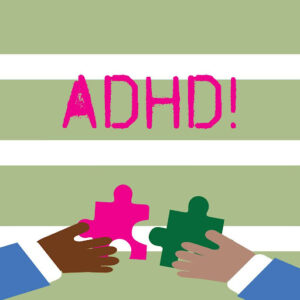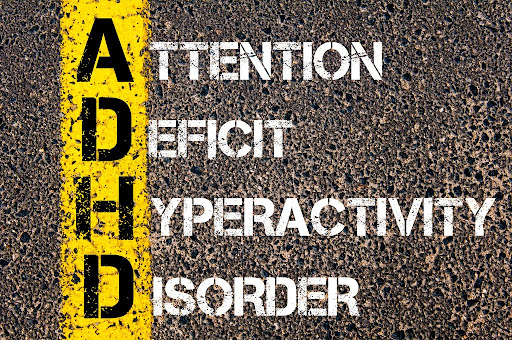Introduction: Deciphering ADHD’s Complexity
At the intersection of neurobiology and human existence lies Attention-deficit/hyperactivity disorder (ADHD), a multifaceted condition that resonates with millions across the globe. Within the intricate tapestry of ADHD, we find challenges in maintaining attention, a persistent dance of impulsivity, and an ever-present aura of hyperactivity. The impact of ADHD reverberates across all facets of life, from the classroom to our most intimate relationships. While there is no magical elixir to cure ADHD, we can traverse its landscape through a diverse array of strategies. Join us on this enigmatic journey as we delve into the enigma of ADHD’s causality, the kaleidoscope of its symptoms, the labyrinthine path to diagnosis, diverse treatment approaches, the horizon of prognosis, and the art of thriving with ADHD.
ADHD’s Enigmatic Origins
Attention Deficit Hyperactivity Disorder (ADHD) is an intricate jigsaw puzzle that captures the lives of countless children and adults worldwide. The cause, or causes, remain elusive. A blend of genetic and environmental influences dances at the heart of this riddle.
Genetics play a symphony in ADHD’s composition. Research reveals that the familial connection is profound; the risk of ADHD surges in the presence of close relatives with this condition. Furthermore, specific genes have been linked to various aspects of ADHD, from impulsivity to hyperactivity.
In the world of ADHD, environmental factors also take the stage. Exposure to alcohol or tobacco during pregnancy forms a bridge to increased risk. The shadow of lead and other toxins, even before birth, may weave itself into the ADHD narrative. Life’s storms, the stressful events, can trigger ADHD-like symptoms. And medical conditions such as traumatic brain injury, epilepsy, stroke, and sleep disorders may join the ensemble. Prenatal complications, premature birth, low birth weight, and maternal depression are also actors in this intricate drama.
The Kaleidoscope of ADHD Symptoms
Attention Deficit Hyperactivity Disorder (ADHD) is a realm where the human mind’s symphony resonates with the complexity of life itself. Yet, not every soul dances to the same tune. ADHD unfurls its colors through three primary types of symptoms: inattention, hyperactivity, and impulsivity. Each person with ADHD becomes a unique painting, shaped by a distinctive blend of these three elements.
Inattention is a prevalent brushstroke in ADHD’s canvas. Those touched by this aspect may find the spotlight of their focus flickering like a candle in the wind. They become entranced by the siren call of distractions, losing themselves in irrelevant stimuli. Tasks and conversations become fleeting whispers, often forgotten. Complex undertakings like reading and writing may resemble a Herculean feat.
Hyperactivity is a splash of vibrancy that colors the lives of some with ADHD. It manifests as restlessness, an eternal urge to keep moving, talking, and venturing into new territories. An insatiable desire to be “on the go” accompanies this exuberance. The concept of risk finds a different meaning as impulsive behaviors emerge.
Impulsivity takes center stage in the ADHD narrative. It is the artist’s stroke that paints actions without the canvas of thought. Impulsive souls navigate life with a lack of consideration for consequences. A race towards decisions often precedes contemplation.
Diagnosis: The Labyrinth of ADHD Confirmation
The diagnosis of ADHD is a labyrinth where medical professionals tread with care, seeking the treasure of clarity in the midst of complexity. It commences with an evaluation by professionals like pediatricians or psychiatrists, delving into behavioral patterns and medical histories. The goal? To unearth the fingerprints of ADHD.
Psychological tests and surveys are additional tools in the diagnostic toolkit, aiding in the task of discerning ADHD from other potential culprits. In ADHD’s tale, only a specific set of criteria penned in the Diagnostic and Statistical Manual of Mental Disorders (DSM-5) can unlock the diagnosis. These criteria unveil a tapestry of symptoms, such as difficulty in sustaining attention, distractibility, impulsivity, and hyperactivity.
Treatment: Navigating the Seas of ADHD Management
In the realm of Attention Deficit Hyperactivity Disorder (ADHD), approximately 6.1 million children in the United States embark on a voyage of focus, restlessness, and impulsivity. While there is no magical elixir to vanquish ADHD, there exists a spectrum of treatment options that navigate these waters with promise.
The most traversed path is medication, a compass pointing to the management of hyperactivity, impulsivity, and enhanced focus. The realm of stimulant medications, including Adderall and Ritalin, often heralds the first chapter of this odyssey, quick to reduce symptoms. Non-stimulant medications such as Strattera may require more time to unveil their effectiveness, a slower but steady approach. The artistry of ADHD management may call for a symphony, a blend of both stimulant and non-stimulant medications, orchestrated according to the individual’s unique response.
In the arsenal of ADHD management, psychotherapy forms an integral facet. Mental health professionals with a focus on ADHD bring behavioral therapy to the table, teaching individuals to craft their coping mechanisms. These skills traverse realms where symptom management and impulse control are mastered. The navigation of social waters finds its North Star.
Prognosis: Glimmers of Hope Amid ADHD’s Landscape
Attention Deficit Hyperactivity Disorder (ADHD) paints a diverse landscape, where the outlook varies among those who navigate its terrain. In this mosaic of lives, the tapestry of prognosis weaves threads of individuality. Treatment types, response to interventions, and the presence of co-occurring conditions all paint unique portraits.
With the winds of proper treatment filling their sails, many individuals with ADHD discover tranquil waters and serene vistas. Each may uncover moments of accomplishment, a chance to shine in the spotlight of personal strengths. Those skilled navigators who blend medication, psychotherapy, behavior therapy, educational interventions, lifestyle adjustments, and even alternative therapies, set a course for uncharted territories of self-realization.
Strategies for Thriving with ADHD
Attention Deficit Hyperactivity Disorder (ADHD) weaves its pattern across the lives of many. This intricate tapestry can be challenging to navigate, but within its folds, one can uncover strategies to thrive while living with ADHD.
To embark on this journey, begin with understanding. Delve into the depths of ADHD, educating yourself about its intricacies. Seek diagnosis and explore treatment options, whether it be medication, psychotherapy, or behavioral therapy.
Craft a roadmap for your journey, one that considers daily goals, breaks tasks into manageable steps, and leverages time management to combat distractions. Embrace routines to provide structure, reducing stress’s unpredictable tides. Fostering physical health through diet and exercise becomes a compass in this landscape.

In Conclusion: Embracing the Complexity of ADHD
ADHD is not a singular path but a labyrinthine world that weaves its way into the lives of millions. It may be challenging, but with understanding, the right support, and the courage to navigate its intricate paths, individuals living with ADHD can carve their own unique and fulfilling journeys. The key is to recognize that each person’s experience of ADHD is distinct, making the journey a personal and powerful one.


